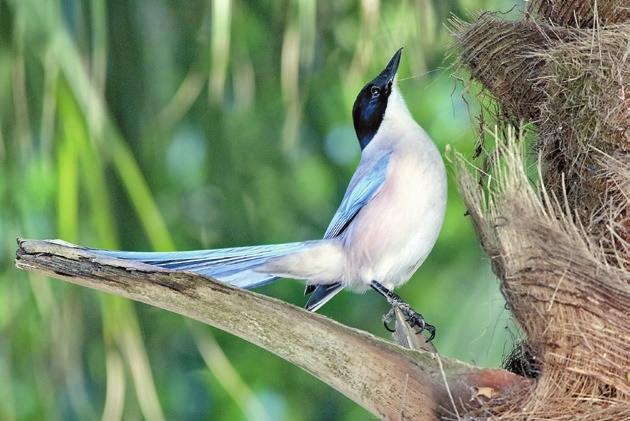
THE azure-winged magpie (Cyanopica cyanus) is found in many parts of East Asia, including Shenzhen. This medium-sized bird measures around 40 centimeters in length. Its dazzling azure blue wings contrast beautifully with its black head. The rest of its body is predominantly white, with a touch of blue on its lower back. Its long, elegant tail adds to its overall gracefulness. Found in woodlands, parks and gardens, this bird is particularly fond of places with dense vegetation, which provide the bird ample opportunities for nesting and foraging. Still, your best chance to spot them is around Shenzhen Bay Park. Rare visitors to Shenzhen in the past, these magpies have in recent years chosen to remain in the city year-round, adapting to the local environment. This omnivorous bird has a diverse diet, consisting of fruits, seeds, insects, and small vertebrates. Its adaptable feeding behavior allows the magpie to thrive in different habitats. Breeding season for them typically begins in the early spring. The bird constructs intricate nests made of twigs, grass, and other plant materials in dense vegetation or trees, in which females lay a clutch of up to six eggs and then incubate them for about three weeks. Both parents feed and care for the chicks until they fledge and become independent. It plays a vital role in maintaining the balance of the local food chain. By consuming fruits, seeds, and insects, the magpie helps control insect populations while also assisting in seed dispersal, contributing to the growth and regeneration of vegetation. The nests they leave behind often become homes for other bird species, thus promoting regional biodiversity. | 
